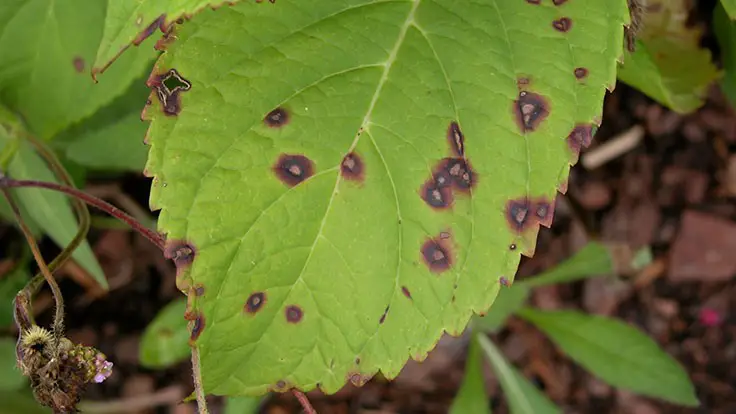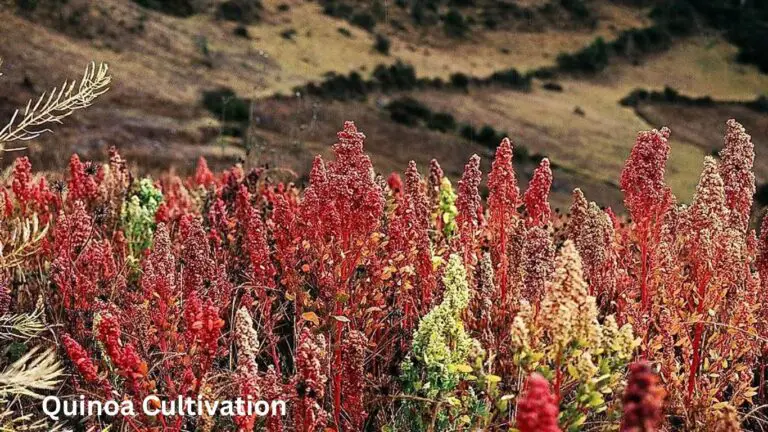Cercospora Leaf Spot: Managing Fungal Diseases
Symptoms of Cercospora Leaf Spot
Cercospora leaf spot is a common fungal disease that affects a wide variety of plants, including vegetables, fruits, and ornamentals. One of the key symptoms of Cercospora leaf spot is the presence of small, circular spots on the leaves. These spots typically start off as tiny, water-soaked lesions that eventually enlarge and develop a tan or gray center with a dark purple margin. As the disease progresses, these spots can coalesce, leading to extensive damage on the leaves.
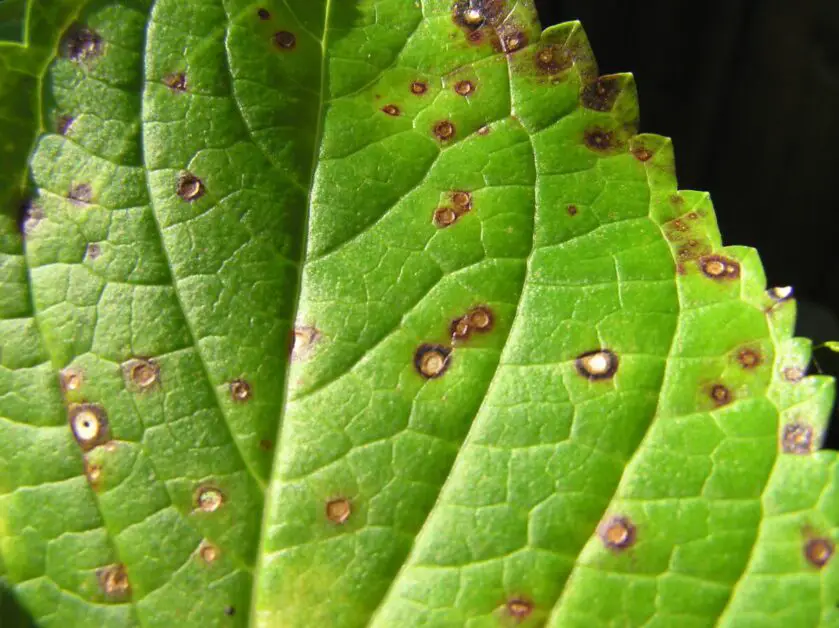
In addition to the characteristic circular spots, plants infected with Cercospora leaf spot may also exhibit other symptoms such as yellowing and wilting of the leaves. This is often a result of the fungus interfering with the plant’s ability to photosynthesize effectively. As the disease advances, the affected leaves may wither and drop prematurely, leading to a reduction in overall plant vigor and yield. Proper identification of these symptoms is crucial for implementing timely intervention strategies to manage Cercospora leaf spot effectively.
Causes of Fungal Diseases in Plants
Fungal diseases in plants are often caused by a combination of factors that create favorable conditions for fungal growth and infection. One of the primary causes is high humidity levels, which create a moist environment where fungi thrive. Poor air circulation around plants can also contribute to the development of fungal diseases by prolonging leaf wetness and providing a conducive setting for spore germination and infection.
Additionally, the presence of plant debris and weeds in close proximity to cultivated plants can serve as reservoirs for fungal pathogens, allowing them to easily spread to healthy plants. Overhead irrigation, especially during the evening or at night, can further exacerbate the risk of fungal diseases by keeping plant foliage wet for extended periods, promoting fungal spore germination and disease spread. Proper plant spacing, good sanitation practices, and avoiding excessive moisture on plant leaves can help reduce the likelihood of fungal diseases in plants.
Identification of Cercospora Leaf Spot
Cercospora leaf spot is a common fungal disease that affects a variety of plant species, including vegetables, ornamentals, and trees. One of the key identification features of Cercospora leaf spot is the presence of small, circular spots on the leaves that start off as yellow or tan in color and eventually darken to brown or gray as the disease progresses. These spots may also have a distinct border or margin, giving them a defined appearance that distinguishes them from other types of leaf damage. In addition to leaf lesions, Cercospora leaf spot can also cause premature leaf drop, leading to defoliation and decreased plant vigor.
Another characteristic symptom of Cercospora leaf spot is the formation of concentric rings or target-like patterns within the leaf spots, which can help further differentiate this disease from other leaf diseases. These rings are a result of the fungal pathogen’s growth and spread within the leaf tissue, causing a distinct visual pattern that aids in accurate diagnosis. In severe cases, the leaf spots may coalesce, leading to large areas of necrotic tissue that can significantly impact the overall health and appearance of the infected plant. Proper identification of Cercospora leaf spot is crucial for implementing effective management strategies to control the spread of the disease and minimize its impact on plant health.
Here is a table about the identification of Cercospora leaf spot:
| Symptom | Description |
|---|---|
| Circular Spots | Small, circular lesions on the leaves |
| Irregular Shapes | Spots may coalesce, forming irregularly shaped lesions |
| Color Changes | Spots start as water-soaked, then turn gray to tan |
| Dark Margins | Spots are surrounded by dark margins |
| Center Discoloration | Centers may become grayish-white with yellow halos |
| Leaf Dropping | Leaves may drop prematurely due to severe infection |
| Lesions on Other Parts | Lesions may also occur on stems, petioles, and fruits |
| Reduced Yield | Severe infections can lead to reduced plant vigor and yield |
| Secondary Infections | Provide entry points for secondary pathogens |
Impact of Cercospora Leaf Spot on Plant Health
Cercospora leaf spot, caused by the fungus Cercospora beticola, is a common fungal disease that affects a wide range of plants, including sugar beets, tomatoes, and spinach. The impact of Cercospora leaf spot on plant health can be significant, leading to reduced photosynthesis, defoliation, and ultimately decreased yield. The disease typically appears as small, circular lesions with grayish centers and dark borders on the leaves, eventually coalescing and causing substantial damage.
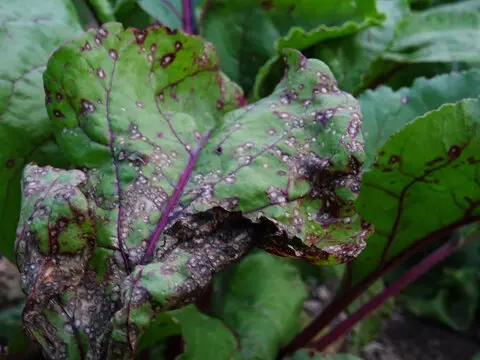
As Cercospora leaf spot progresses, the plant’s ability to carry out essential functions such as nutrient uptake and water transport is compromised. This can result in stunted growth and reduced overall vigor, making the plant more susceptible to other stressors such as pests or environmental fluctuations. In severe cases, Cercospora leaf spot can even lead to complete crop loss, affecting not only the current season’s harvest but also potentially impacting subsequent planting cycles.
Preventative Measures for Fungal Diseases
Fungal diseases can wreak havoc on plants, causing extensive damage and sometimes irreversible harm if left unchecked. To prevent the onset and spread of these diseases, implementing effective preventative measures is crucial. One fundamental strategy is to practice good garden hygiene by regularly removing dead or diseased plant material, as this can serve as a breeding ground for fungal pathogens.
Another key preventative measure is to provide adequate air circulation around plants, as stagnant air can create a conducive environment for fungal diseases to thrive. Proper spacing between plants, trimming overgrown foliage, and avoiding overcrowding can help improve ventilation and reduce the risk of fungal infections. Additionally, utilizing drip irrigation systems instead of overhead watering can help keep foliage dry, further minimizing the chances of fungal diseases taking hold. By being proactive and incorporating these preventative measures into your gardening routine, you can safeguard your plants against the detrimental effects of fungal pathogens.
Cultural Practices to Manage Cercospora Leaf Spot
Cultural practices play a vital role in managing Cercospora leaf spot and promoting overall plant health. One effective method is to ensure proper spacing between plants to allow for adequate air circulation, which can help reduce humidity levels that favor the development of fungal diseases. Additionally, removing and disposing of infected plant debris promptly can prevent the spread of the disease to healthy plants and minimize the chances of recurrence.
Moreover, practicing good sanitation by regularly cleaning and disinfecting gardening tools can significantly reduce the risk of spreading fungal pathogens, including Cercospora leaf spot. Implementing crop rotation strategies can also be beneficial in managing the disease, as it helps disrupt the life cycle of the pathogen and reduces the build-up of inoculum in the soil. By adopting these cultural practices, gardeners can take proactive steps towards preventing and managing Cercospora leaf spot in their plants.
Chemical Control Options for Fungal Diseases
Chemical control options for fungal diseases play a significant role in managing plant infections caused by pathogens. The use of fungicides is a common method to combat fungal diseases effectively. Fungicides work by inhibiting the growth and spread of fungal pathogens, thereby protecting plants from potential damage. It is crucial to follow the instructions on fungicide labels carefully, including the recommended application rates and intervals, to ensure optimal effectiveness while minimizing the risk of resistance development in the pathogens.
Selecting the right fungicide is essential for successful disease control. Different fungicides have varying modes of action and effectiveness against specific types of fungi. It is crucial to identify the fungal pathogen causing the disease accurately before choosing a fungicide for treatment. Consulting with local agricultural extension services or plant pathology experts can provide valuable guidance on selecting the most appropriate fungicide for controlling specific fungal diseases based on the type of pathogen, plant species, and environmental conditions.
Biological Control Methods for Managing Fungal Diseases
Biological control methods offer a sustainable and environmentally friendly approach to managing fungal diseases in plants. One effective method involves the use of beneficial microorganisms such as bacteria and fungi to suppress the growth of pathogenic fungi causing diseases like Cercospora leaf spot. These beneficial microorganisms can outcompete the harmful fungi for resources, produce antifungal compounds, or directly parasitize them, thereby reducing disease incidence in plants. By harnessing the power of nature’s own defense mechanisms, gardeners can establish a balanced ecosystem that promotes plant health and resilience against fungal pathogens.
Another biological control strategy involves the use of plant extracts or essential oils with antifungal properties to inhibit the growth of fungal pathogens. These natural compounds have shown promising results in controlling Cercospora leaf spot and other fungal diseases in plants. By incorporating these botanical extracts into integrated pest management programs, gardeners can effectively combat fungal diseases while minimizing the use of synthetic chemicals. This approach not only helps in managing fungal diseases but also contributes to preserving biodiversity and promoting sustainable gardening practices.
Integrated Pest Management Strategies for Cercospora Leaf Spot
Cercospora leaf spot is a common fungal disease that affects many plant species, causing significant damage to their foliage. Integrated Pest Management (IPM) strategies offer a holistic approach to managing this disease effectively. One key aspect of IPM for Cercospora leaf spot is cultural practices that aim to create unfavorable conditions for the fungus to thrive. By promoting good plant hygiene, such as removing and disposing of infected plant debris, we can minimize the spread of the disease within the garden or field.
Another crucial component of IPM for Cercospora leaf spot is the use of resistant plant varieties. Selecting plant species or cultivars that have natural resistance to the fungus can greatly reduce the incidence and severity of the disease. By incorporating resistant plant varieties into your planting scheme, you can proactively safeguard your plants against Cercospora leaf spot and minimize the need for chemical interventions.
Environmental Factors Affecting Fungal Disease Development
Fungal diseases in plants are not solely dependent on the presence of the pathogen; environmental conditions play a crucial role in their development. Factors such as temperature, humidity, and light intensity can significantly influence the prevalence and severity of fungal diseases. For instance, high levels of humidity create a conducive environment for fungal spore germination and disease spread. Warm temperatures can accelerate the growth and reproduction of fungal pathogens, leading to rapid disease progression.
Moreover, poor air circulation in plant canopies can create a microclimate that favors the development of fungal diseases. Stagnant air provides an ideal setting for fungal spores to settle and infect plant tissues. Additionally, low light intensity can weaken plants’ immune responses, making them more susceptible to fungal infections. Understanding and managing these environmental factors can help gardeners prevent and minimize the impact of fungal diseases on their plants.
The table below shows some of the factors that can affect the fungal diseases:
| Environmental Factor | Description |
|---|---|
| Temperature | Optimal temperature ranges for fungal growth vary among species. Some fungi thrive in warmer conditions, while others prefer cooler temperatures. Extremes in temperature can inhibit or enhance fungal growth. |
| Humidity | High humidity levels create favorable conditions for fungal spore germination and growth. Fungi typically require moisture to infect plant tissues and proliferate. |
| Rainfall | Rainfall events can facilitate the spread of fungal spores through splashing or wind dispersal. Excessive rainfall can also create prolonged periods of high humidity, increasing disease incidence. |
| Relative Humidity | Relative humidity levels influence the ability of fungal spores to germinate and infect plant tissues. High relative humidity favors disease development, while low humidity may inhibit fungal growth. |
| Leaf Wetness | Prolonged leaf wetness provides an ideal environment for fungal spore germination and infection. Condensation, dew, or rain can lead to extended periods of leaf wetness, promoting disease development. |
| Air Circulation | Poor air circulation can contribute to higher humidity levels within plant canopies, creating a more favorable environment for fungal diseases. Adequate air movement can help reduce humidity and inhibit fungal growth. |
| Soil Moisture | Soil moisture levels influence the survival and activity of certain fungal pathogens, particularly those that infect plant roots or reside in the soil. Saturated soils can promote root rot diseases. |
| Light Intensity | Light intensity affects the microclimate within plant canopies and on leaf surfaces. Some fungal pathogens thrive in low-light conditions, while others may be inhibited by intense sunlight or UV radiation. |
| Plant Density | Dense plant populations can create microclimates conducive to fungal disease development by reducing air circulation and increasing humidity levels. Thinning plants can improve air movement and reduce disease incidence. |
Resistant Plant Varieties for Cercospora Leaf Spot
Selecting resistant plant varieties for Cercospora leaf spot can significantly reduce the risk of infection and minimize the need for chemical control. Various plant species have shown natural resistance to this fungal disease, making them valuable options for gardeners and farmers looking to manage Cercospora leaf spot effectively. By choosing resistant plant varieties, individuals can promote sustainable and environmentally friendly practices in plant cultivation while maintaining healthy and productive crops.
Plant breeders and researchers have identified specific cultivars within different plant species that exhibit resistance to Cercospora leaf spot. For instance, some tomato varieties like ‘Mountain Fresh Plus,’ ‘Defiant,’ and ‘Tachi’ have demonstrated resistance to the disease, offering growers a viable alternative to conventional susceptible cultivars. Similarly, in crops such as soybeans, specific cultivars like ‘Peking’ showcase resistance to Cercospora leaf spot, providing farmers with options to mitigate disease pressure in their fields. By incorporating these resistant plant varieties into cultivation practices, individuals can proactively manage Cercospora leaf spot outbreaks, minimizing yield losses and promoting sustainable agricultural production.
Monitoring and Early Detection of Fungal Diseases
Early detection of fungal diseases in plants is crucial for effective management and prevention of widespread damage. One method for monitoring such diseases involves regular visual inspections of plant leaves, stems, and fruits for any signs of discoloration, lesions, or unusual growth patterns. These visual cues can indicate the presence of fungal pathogens and prompt further investigation.
In addition to visual inspections, utilizing monitoring tools such as sticky traps or pheromone traps can aid in detecting fungal diseases early on. These traps can capture insect vectors that may carry fungal spores, contributing to the spread of diseases across plants. By regularly checking these traps and monitoring changes in insect populations, gardeners can proactively address potential fungal outbreaks before they escalate.
Proper Plant Nutrition to Prevent Cercospora Leaf Spot
To prevent Cercospora leaf spot and promote overall plant health, it is crucial to provide proper plant nutrition. Adequate nutrition plays a significant role in boosting the plant’s natural defenses against fungal diseases like Cercospora leaf spot. Plants require essential nutrients such as nitrogen, phosphorus, potassium, calcium, magnesium, and micronutrients like iron, manganese, zinc, copper, and boron to maintain their immune system and resilience against diseases.
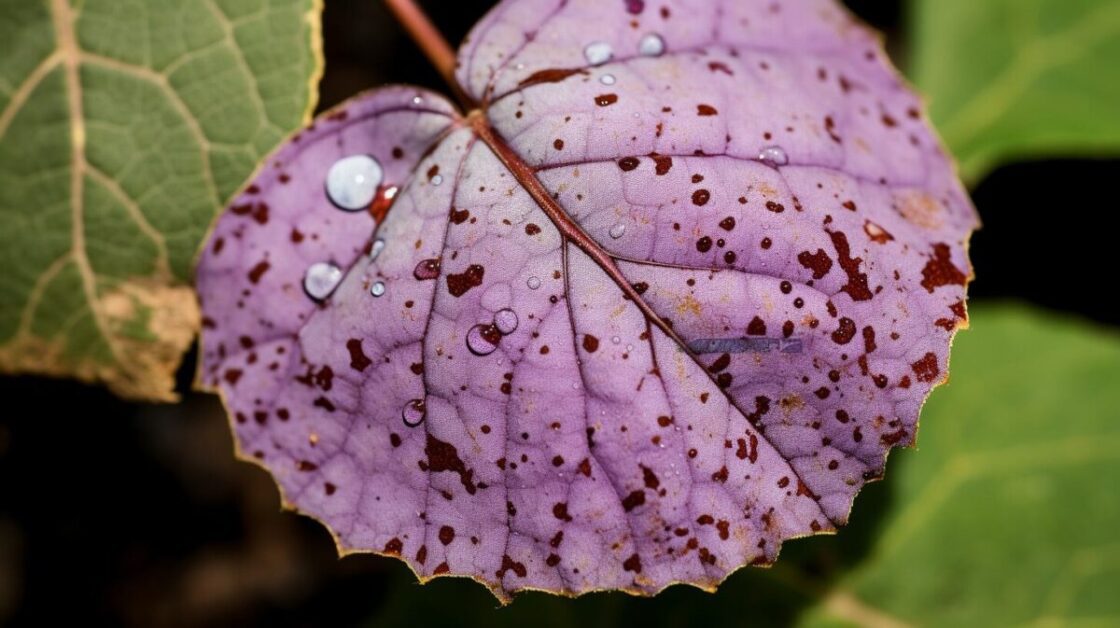
Ensuring a balanced and nutrient-rich growing environment for plants is key to preventing Cercospora leaf spot. Providing the right balance of nutrients in the soil or through hydroponic systems fosters healthy plant growth, enabling them to withstand disease pressures more effectively. Proper nutrition not only strengthens the plant’s ability to combat fungal pathogens but also enhances its overall growth, productivity, and vitality.
Effects of Fungicides on the Environment
Fungicides play a crucial role in managing fungal diseases in plants, protecting crops from significant losses. However, the use of fungicides can have environmental repercussions. When fungicides are applied, they can leach into the soil or run off into water sources, leading to potential contamination of groundwater and surface water bodies. This contamination poses risks to aquatic organisms, affecting the overall ecosystem health in agricultural areas.
Moreover, the widespread use of fungicides can also impact non-target organisms such as bees, birds, and beneficial insects. These chemicals may disrupt the natural balance of the ecosystem, affecting pollination processes and pest control mechanisms. Additionally, certain fungicides can persist in the environment for extended periods, exerting long-lasting effects on soil microbial communities and biodiversity. It is essential for gardeners and farmers to exercise caution and adopt sustainable practices to minimize the environmental footprint of fungicide use while effectively managing fungal diseases in plants.
Fungal Disease Management in Organic Gardening.
Organic gardening presents a unique set of challenges when it comes to managing fungal diseases. One of the key strategies in organic gardening is maintaining a healthy and balanced ecosystem within the garden. This can be achieved through practices such as crop rotation, companion planting, and ensuring proper soil health through composting and mulching. By promoting a diverse and resilient garden environment, organic gardeners can naturally suppress fungal diseases and improve overall plant health.
In addition to cultural practices, organic gardeners can also utilize biological control methods to manage fungal diseases. Beneficial organisms like predatory insects, nematodes, and microorganisms can be introduced into the garden to help control fungal pathogens. Encouraging the presence of these natural allies can help keep fungal disease populations in check without the use of synthetic chemicals, aligning with the principles of organic gardening and promoting a sustainable ecosystem within the garden.
Get more information of cercopora leaf spot by watching this video.
Can fungal diseases like Cercospora Leaf Spot be completely eliminated from organic gardens?
While it may be difficult to completely eliminate fungal diseases from organic gardens, proper management practices can help prevent their spread and minimize their impact on plant health.
Are there any natural remedies that can be used to control fungal diseases in organic gardening?
Yes, there are several natural remedies that can help control fungal diseases in organic gardening, such as neem oil, copper fungicides, and baking soda solutions.
How can I prevent fungal diseases from spreading to other plants in my organic garden?
To prevent fungal diseases from spreading to other plants, it is important to remove and destroy infected plant material, practice good sanitation, and avoid working in the garden when plants are wet.
Are there any specific environmental factors that can increase the risk of fungal disease development in organic gardens?
Yes, environmental factors such as high humidity, poor air circulation, and overcrowding of plants can increase the risk of fungal disease development in organic gardens.
Are there any organic fungicides that are effective in managing fungal diseases?
Yes, there are several organic fungicides available that can help manage fungal diseases in organic gardening, such as sulfur-based fungicides and biological fungicides containing beneficial fungi or bacteria.
How important is early detection in managing fungal diseases in organic gardening?
Early detection is crucial in managing fungal diseases in organic gardening, as it allows for prompt intervention and treatment before the disease has a chance to spread and cause widespread damage.
Can proper plant nutrition help prevent fungal diseases like Cercospora Leaf Spot?
Yes, providing plants with proper nutrition, including balanced fertilization and adequate soil health, can help boost their immune system and make them more resistant to fungal diseases like Cercospora Leaf Spot.

